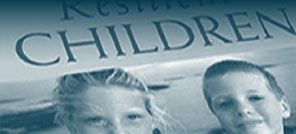In my previous two columns I focused on the ways in which the inborn temperament of children impacts on both their development and the manner in which adults respond to them. I reviewed the work of two of the most influential researchers of temperament, psychiatrists Stella Chess and Alexander Thomas. They and their colleagues identified nine characteristics of temperament in infants, and based upon these nine characteristics they labeled three kinds of infants, the “easy” child; the “slow-to-warm-up,” cautious, or shy child; and the “difficult” child. In my March column I described guidelines for interacting with the “slow-to-warm-up” child. My original intention was for this months column to discuss principles for relating to the temperamentally difficult youngster and then I would address a new content area next month. However, when I finished writing this months article it was much longer than I anticipated so that I decided it would be best to divide the topic of temperamentally difficult children it into two sections, one this month, the second to appear in May. To begin, I should note that a number of individuals have taken issue with the label “difficult,” believing that it carries with it a negative connotation that children…



